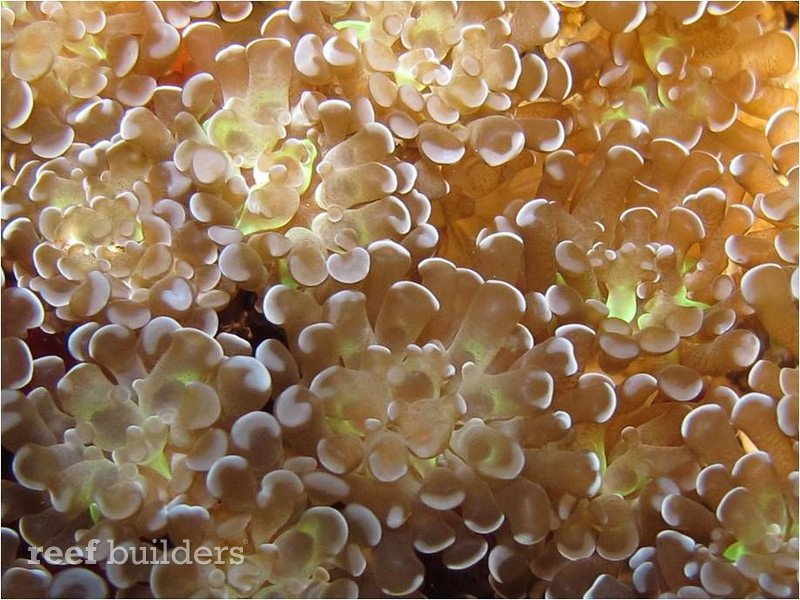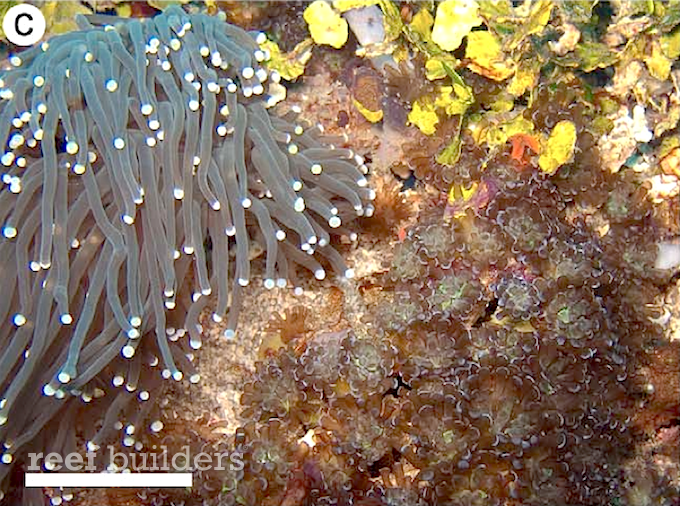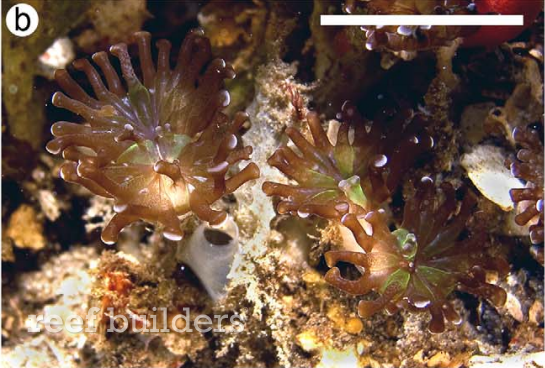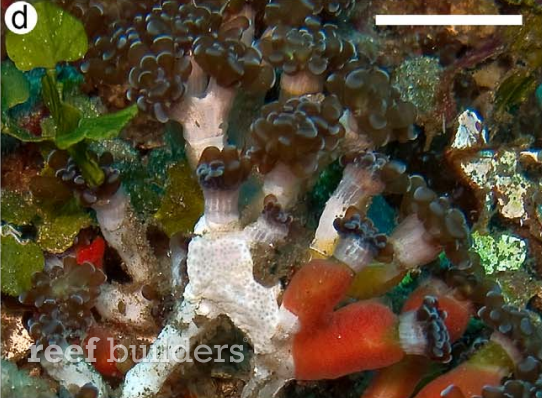We all had a good look at the new Euphyllia baliensis with the huge announcement from Conservation International in Spring of 2011 but now the new coral has a name, and a whole lot more details on what makes this coral special. Hailing only from a limited range in Bali, Euphyllia baliensis has extremely thin branches, which are well spaced out like a classic branching hammer coral, Euphyllia parancora.

Whereas Euphyllia cristata previoudly had the smallest corallites of all the Euphyllia species, its 20-40mm (0.75 to 1.5 inch) corallites completely dwarf the thinner-than-a-pencil branches of Euphyllia baliensis which clock in at a miniscule 3mm – that’s an eighth of an inch!

With branches thinner than an Acropora and corallites on par with the axial tip of some larger staghorn Acros, Euphyllia baliensis is truly an extreme oddball within the genus Euphyllia but the oddity doesn’t end there. All stony corals are Hexacorals, meaning that they have a body plan, skeleton, corallite and polyp arrangements that are usually in multiples of six – think Goniopora with 24 tentacles, Alveopora with 12. For some strange evolutionary reason Euphyllia baliensis not only has super tiny branches, but its internal skeleton is an “octameral” body plan with a symmetry of four or eight being more common.
Some other features to note about Euphyllia baliensis is that is has mostly hammer shaped tentacle tips, but the tentacles frequently also have little side protuberances giving it a mitten-shaped appearance. The color of Euphyllia baliensis is somewhat muted being a greyish brown with a little green at the center of the polyp but something tells us our awesome LED aquarium lighting could do wonders for the species looks.
Euphyllia baliensis is described by Turak, DeVantier & Erdmann in Zootaxa 3422: 52–61.

Speaking of reef aquariums, so far Euphyllia baliensisis only known from the “deeper reef slope of a small island off eastern Bali, bordering Lombok Strait “, found at a depth of 27 to 37 meters (85 to 120 feet). A lot of Euphyllia corals are exported from Bali, many of them aquacultured and come to think of it we have seen some thin-branched strains of Euphyllia before, but none that way thinner than the thinnest Caulastrea we’ve ever seen.
Hopefully, Euphyllia baliensis doesn’t suffer from delicate and highly breakable branches that get demolished in shipping, part of the reason why we probably see so few Anacropora colonies in the trade. With lots of great coralogists operating in and around Bali we have confidence that somebody will try to find this coral, and someday it will become readily available through mariculture or as frags from fellow reefers.





